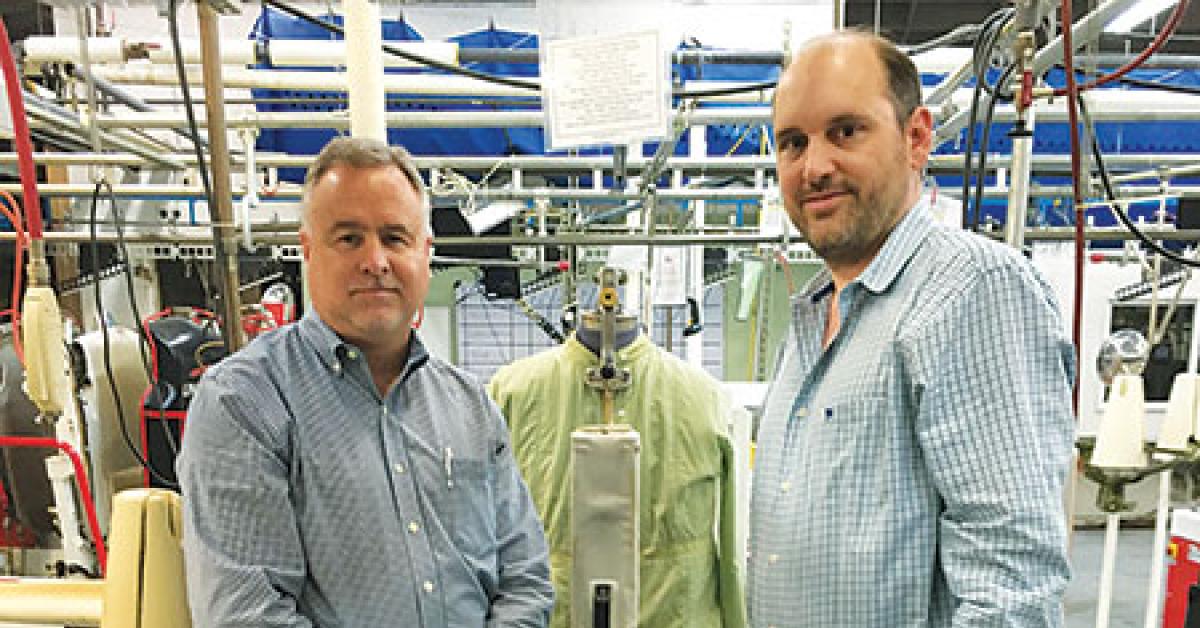CHICAGO — “We are seeing consistent growth in demand for equipment that is easy to use and produces high-quality finished garments,” says Wes Nelson, vice president of sales and chief operating officer at Elk Grove Village, Ill.-based Sankosha USA, a manufacturer of tensioning equipment for the drycleaning industry.
“Demand,” he adds, “for both semi- and automatic-bagging equipment continues to grow.”
Finishing equipment, like other segments of the drycleaning process, is going through a metamorphosis. The shift to casual styles in our world is partly the reason. But it has to do with the need for reduced labor costs as well.
“Tensioning equipment is now seen as the most efficient way to finish ‘relaxed style’ garments,” says Nelson.
About these relaxed styles, Tom Stites, sales manager at finishing equipment manufacturer Unipress in Tampa, Fla., says, “A shift in styles to a more relaxed look is a major concern to the industry, as a whole. In my opinion, we are a service industry that has prospered by offering a service that can’t be duplicated in a home laundry.”
By training consumers to accept less than a true professional cleaning and finishing, this makes it easier for the garment industry to achieve these results at home, he says. “We must maintain high quality standards to protect our industry.”
Quality is always important. It’s tops on the list. But there’s always the issue of cost and that drives innovation. You may already feel that you need to upgrade your finishing equipment.
Many manufacturers hear from store operators about this topic.
“The need to upgrade or replace shirt finishing equipment,” Nelson indicates, “continues to be the dry cleaner’s No. 1 priority.”
Yuriko Tanabe, vice president for Secaucus, N.J.-based European Finishing Equipment, which sells European-style finishing equipment under the Hi-Steam brand, says that many of her drycleaning customers “ask for less expensive, smaller, high-production shirt finishers.”
Automation is a keyword in finishing today. With it, drycleaning owners can more quickly train their operators to use more efficient machines to produce higher-quality finished garments at a lower cost.
Tanabe sees this: “Cleaners will look for more automation, less hand-finishing, (and) smaller, simpler and high-production finishing machines that are energy-efficient to create the cooler work environment.”
The ultimate outcome all dry cleaners seek is a high-quality finished garment to satisfy customers. Dry cleaners look at finishing equipment to help them get there.
“Overcoming fear of new technology,” Tanabe says, is one of the challenges in the industry today. “Once the cleaners discover that tensioning equipment is easy to operate and produces a fine finish, they change their minds.”
“Up-air boards are for those cleaners who are very particular and serious about producing a beautiful finish on fine garments. For other cleaners, vacuum boards will produce a good finish on most garments,” she adds.
AUTOMATE OPERATE
Other obvious challenges come with automating the finishing process. Employees need to be properly trained on tensioning equipment, and the finishing process itself needs to run efficiently.
“The big challenge is to educate the dry cleaner to forget the traditional ways that they have worked in the past,” insists John Harper, director of sales, pressing and finishing division of Denver, N.C.-based finishing equipment maker Leonard Automatics.
“(Dry cleaners) need to look at what can be done with automated machinery and think of it as a system to finish a garment,” he says. “They need to understand that no automated machine will do 100% of a job all the time.
“The use of tensioning machinery in conjunction with vacuum/up-air tables will increase production which in turn will give (the owner) a good return on investment,” says Harper.
Styles are more relaxed in today’s society but quality never fades.
Speed in production is also vital, which Harper points out: “Using modern systems such as tensioning machines, up-air blowing tables as well as tunnel finishers finishes all types of garments (using) faster production with semi-skilled labor.”
Your workforce is a big part of the picture today, so training on automated equipment, any equipment for that matter, is important to safely maintain the level of high-quality finishing the customer has come to expect from your business.
“Automation is the only way to stay competitive in this business,” says Harper. “As labor rates continue to increase, dry cleaners have to find ways to decrease labor content yet maintain or improve productivity and quality.”
He indicates that investing in automated machines can easily be justified when an operator reduces direct labor by 35-50% and then the operator can teach their employees to be loaders.
With automation becoming more of an option and a daily discussion topic among dry cleaners, can it be stated that any employee may be able to be trained to operate these machines?
Stuart Ilkowitz, president of garment pressing equipment manufacturer Trevil America, Mamaroneck, N.Y., says, “The operations of many machines are very similar, which allows for the cross-training of operators; the same person who can operate a shirt unit can also operate a pants finishing machine.”
He notes that his company recently introduced a pants finishing machine to the United States. “An operator who has never pressed pants before can be taught very quickly how to operate a pants presser machine and produce 35-40 pair of pants per hour.”
The Trevil machine operates like a tensioning pants topper. After that cycle is completed, instead of going to a legger press, the top mechanism raises up and a vacuum panel moves forward, he notes. The operator simply has to clip the pants in position to line up the creases and then push two buttons to close the vertical presses.
“Very simple, very easy to operate,” Ilkowitz says, “and does not require an experienced operator.”
“Dry cleaners today are more in tune with labor issues, which is why we see the market moving more and more in the direction of equipment that is designed to simplify the job and reduce the level of skill needed by the operator,” he adds.
Check back Thursday for the conclusion!
Have a question or comment? E-mail our editor Dave Davis at [email protected].



